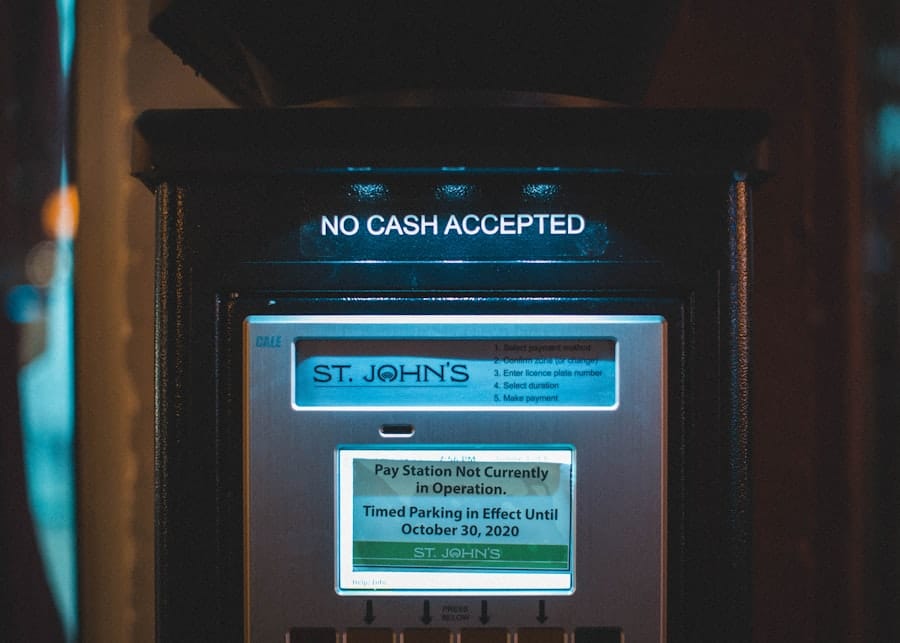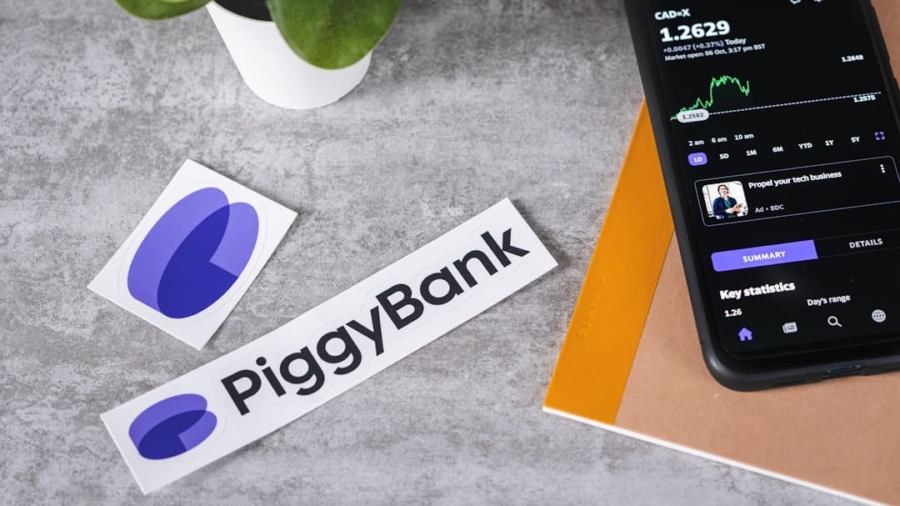In recent years, the banking landscape has undergone a seismic shift with the emergence of digital-only banks, often referred to as neobanks. These institutions operate without physical branches, relying entirely on digital platforms to provide banking services. The rise of these banks can be attributed to several factors, including technological advancements, changing consumer behaviors, and a growing demand for more efficient financial solutions.
Unlike traditional banks, which often have cumbersome processes and outdated systems, digital-only banks leverage technology to streamline operations and enhance customer experiences. The appeal of digital-only banks is particularly pronounced among younger generations who are accustomed to conducting their lives online. With the proliferation of smartphones and mobile applications, consumers now expect banking services to be as accessible and user-friendly as their favorite social media platforms.
This shift has led to a surge in the number of digital-only banks, with many startups entering the market to cater to this demand. For instance, banks like Chime and N26 have gained significant traction by offering no-fee accounts, instant money transfers, and budgeting tools that resonate with tech-savvy users. As a result, traditional banks are increasingly compelled to adapt their services to compete with these agile newcomers.
Key Takeaways
- Digital-only banks are on the rise, offering convenient and accessible banking services without physical branches.
- Millennials prefer digital banking for its technology advantage and personalized user experience.
- Personalized user experience is a key factor in attracting and retaining millennial customers.
- Digital-only banks embrace financial wellness by offering tools and resources to help customers manage their finances.
- Convenience and accessibility are top priorities for digital-only banks, offering 24/7 access and easy-to-use mobile apps.
Understanding Millennial Banking Preferences
Millennials, those born between 1981 and 1996, represent a significant demographic that is reshaping the banking industry. Their preferences are markedly different from those of previous generations, driven by a desire for convenience, transparency, and personalized services. Research indicates that millennials prioritize digital interactions over in-person experiences, making them more likely to choose banks that offer robust online platforms and mobile applications.
This generation values speed and efficiency; they expect to complete transactions quickly without the need for lengthy paperwork or waiting in line. Moreover, millennials are more inclined to seek out financial institutions that align with their values. They tend to favor banks that demonstrate social responsibility and sustainability.
For example, many digital-only banks have adopted eco-friendly practices, such as paperless statements and carbon offset programs, which resonate with environmentally conscious consumers. Additionally, millennials are drawn to features that promote financial literacy and empowerment, such as budgeting tools and educational resources. This shift in preferences has prompted banks to innovate their offerings and create products that cater specifically to the needs of this influential demographic.
The Technology Advantage

The backbone of digital-only banks is their reliance on cutting-edge technology. These institutions utilize advanced software and algorithms to provide seamless banking experiences that traditional banks often struggle to match. For instance, many neobanks employ artificial intelligence (AI) to analyze customer behavior and offer personalized recommendations.
This technology enables them to anticipate user needs and deliver tailored financial solutions that enhance customer satisfaction. Furthermore, the use of cloud computing allows digital-only banks to operate with lower overhead costs compared to their brick-and-mortar counterparts. By eliminating the need for physical branches, these banks can invest more resources into technology development and customer service enhancements.
This technological advantage not only enables them to offer competitive interest rates and lower fees but also allows for rapid scalability. As they grow, digital-only banks can quickly adapt their platforms to accommodate increasing user demands without the constraints of traditional infrastructure.
Personalized User Experience
One of the hallmarks of digital-only banks is their commitment to providing a personalized user experience. By leveraging data analytics and machine learning, these banks can create customized financial products that cater to individual customer needs. For example, some neobanks offer personalized savings plans based on users’ spending habits and financial goals.
This level of personalization fosters a sense of connection between the bank and its customers, enhancing loyalty and engagement. Moreover, digital-only banks often employ user-friendly interfaces that prioritize simplicity and ease of navigation. This design philosophy is crucial in attracting users who may feel overwhelmed by the complexity of traditional banking systems.
Features such as intuitive dashboards, customizable alerts, and easy access to customer support contribute to a positive user experience. By focusing on personalization and usability, digital-only banks are not only meeting customer expectations but also setting new standards for the industry.
Embracing Financial Wellness
In addition to providing traditional banking services, many digital-only banks are embracing the concept of financial wellness. This approach goes beyond mere transactions; it involves equipping customers with the tools and knowledge they need to achieve their financial goals. For instance, some neobanks offer integrated budgeting tools that help users track their spending habits and identify areas for improvement.
These features empower customers to take control of their finances and make informed decisions.
Many digital-only banks provide access to articles, webinars, and interactive tools that cover topics such as saving strategies, investment options, and debt management.
By prioritizing financial education, these institutions not only enhance customer satisfaction but also foster long-term relationships built on trust and mutual growth.
Convenience and Accessibility

The convenience offered by digital-only banks is one of their most significant advantages over traditional banking institutions. With 24/7 access to banking services through mobile apps and websites, customers can manage their finances at any time and from anywhere. This level of accessibility is particularly appealing in today’s fast-paced world where individuals juggle multiple responsibilities.
Whether it’s checking account balances during a lunch break or transferring funds while commuting, digital-only banks provide the flexibility that modern consumers demand. Additionally, many neobanks have implemented features such as instant account setup and real-time transaction notifications that further enhance convenience. Users can open accounts within minutes using their smartphones without the need for extensive paperwork or in-person visits.
This streamlined process not only saves time but also reduces barriers for individuals who may have previously felt intimidated by traditional banking procedures. As a result, digital-only banks are attracting a diverse range of customers who appreciate the ease of use and accessibility they provide.
Building Trust and Loyalty
While digital-only banks excel in convenience and technology, building trust remains a critical challenge in an industry where customer confidence is paramount. To foster trust among users, these institutions must prioritize transparency in their operations. Many neobanks achieve this by clearly communicating fees, terms, and conditions associated with their services.
By eliminating hidden charges and providing straightforward information, they create an environment where customers feel secure in their financial decisions. Moreover, customer service plays a pivotal role in establishing loyalty among users. Digital-only banks often utilize chatbots and AI-driven support systems to provide immediate assistance; however, they also recognize the importance of human interaction when needed.
Offering responsive customer support through various channels—such as live chat, email, or phone—can significantly enhance user satisfaction. By demonstrating a commitment to addressing customer concerns promptly and effectively, digital-only banks can cultivate long-lasting relationships built on trust.
The Future of Banking
As we look ahead, the future of banking appears increasingly intertwined with technology and innovation. Digital-only banks are likely to continue expanding their market share as they refine their offerings and adapt to evolving consumer preferences. The integration of emerging technologies such as blockchain could further revolutionize the industry by enhancing security and streamlining transactions.
Moreover, collaboration between traditional banks and fintech companies may become more prevalent as established institutions seek to leverage the agility of digital-only banks. This partnership could lead to hybrid models that combine the best aspects of both worlds—offering customers the convenience of digital banking alongside the stability of established financial institutions. In conclusion, the rise of digital-only banks signifies a transformative era in the banking industry characterized by technological advancements, changing consumer preferences, and an emphasis on personalized experiences.
As these institutions continue to innovate and adapt to the needs of modern consumers, they will undoubtedly shape the future landscape of banking for years to come.
In the rapidly evolving financial landscape, digital-only banks are increasingly capturing the attention of millennials, a tech-savvy generation that values convenience and efficiency. These banks offer streamlined services through user-friendly apps, eliminating the need for physical branches and reducing overhead costs. A related article that delves into the intersection of technology and consumer behavior is What is BOPIS and How Does It Work?. This piece explores the Buy Online, Pick Up In Store (BOPIS) model, which, like digital banking, leverages technology to enhance customer experience by offering flexibility and immediacy, key factors that resonate with modern consumers.
FAQs
What are digital-only banks?
Digital-only banks are financial institutions that operate exclusively online, without any physical branches. They offer banking services such as savings accounts, checking accounts, loans, and investment options through their mobile apps and websites.
How are digital-only banks winning over millennials?
Digital-only banks are winning over millennials by offering user-friendly mobile apps, low fees, and innovative features such as budgeting tools, automated savings, and real-time transaction notifications. Millennials, who are tech-savvy and value convenience, are drawn to the seamless digital experience provided by these banks.
What are some advantages of digital-only banks for millennials?
Some advantages of digital-only banks for millennials include 24/7 access to their accounts, no minimum balance requirements, lower fees compared to traditional banks, and the ability to easily manage their finances on the go. Additionally, digital-only banks often offer higher interest rates on savings accounts and competitive rewards programs.
Are digital-only banks safe for millennials to use?
Digital-only banks are regulated and insured just like traditional banks, so they offer the same level of security for millennials’ deposits. Additionally, many digital-only banks use advanced encryption and authentication methods to protect their customers’ information and transactions. It’s important for millennials to choose a reputable digital-only bank with strong security measures in place.
What should millennials consider before choosing a digital-only bank?
Before choosing a digital-only bank, millennials should consider factors such as the bank’s fees, interest rates, ATM access, customer service quality, and the availability of features that align with their financial goals and lifestyle. It’s also important for millennials to ensure that the digital-only bank they choose is FDIC-insured or has similar deposit insurance.

